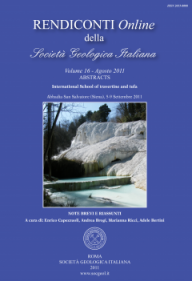
The Lapis Tiburtinus travertine (Tivoli, Central Italy): its controversial tectonic vs paleoclimatic origin
Luigi De Filippis (*), Claudio Faccenna (*), Renato Funiciello (*), Andrea Billi (**), Michele Soligo (*), Claudio Rossetti (*) & Paola Tuccimei (*)
(*) Dipartimento di Scienze Geologiche, Università degli Studi Roma Tre, Largo San Leonardo Murialdo 1, 00146 Roma. E-mail: ldefilippis@uniroma3.it
(**) IGAG-CNR, c/o Dipartimento Scienze della Terra, Sapienza Università di Roma, Piazzale A. Moro 5, 00185 Roma.
DOI: https://doi.org/
Volume: 16/2011
Pages: 15-16
Abstract
The depositional and erosional history of the Lapis Tiburtinus endogenic travertine located 30 km to the east of Rome, Central Italy, near the Colli Albani quiescent volcano, is interpreted through three-dimensional stratigraphy and uranium-series geochronology. Analyses of large exposures located in active quarries and of cores obtained from 114 industrial wells reveal that the travertine deposit is about 20 km2 wide and 60 m thick on average. The travertine thickness is over 85 m toward its western N-S-elongated side, where thermal springs and large sinkholes occur aligned over a seismically-active N-striking shallow fault. Results constrain the onset and conclusion of travertine deposition at about 115 and 30 ka, respectively. This deposit is characterized by a succession of depositional benches grown in an aggradational fashion and separated by five main erosional surfaces, which are associated with paleosols, conglomerates, and karstic features. This evidence shows that the travertine evolution was mostly controlled by water table fluctuations. A comparison with global and local paleoclimatic indicators suggests that water table fluctuations were partly modulated by climate cycles. Other influencing factors may have been fault-related deformation and volcanic activity.
Keywords
Get Full Text